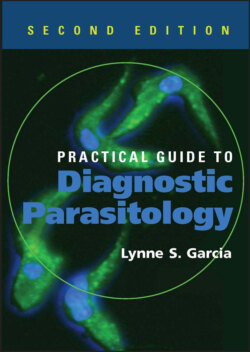Читать книгу Practical Guide to Diagnostic Parasitology - Lynne Shore Garcia - Страница 58
На сайте Литреса книга снята с продажи.
Flagellates Leishmaniae
ОглавлениеThe leishmaniae have undergone extensive classification revisions. However, from a clinical perspective, recovery and identification of the organisms are still related to body sites such as the macrophages of the skin (cutaneous), the skin and mucous membranes (mucocutaneous), and the whole reticuloendothelial system (visceral—bone marrow, spleen, liver). Recovery of leishmanial amastigotes is limited to the site of the lesion in infections other than those caused by the Leishmania donovani complex (visceral leishmaniasis). These protozoa have both amastigote (mammalian host) and promastigote (sand fly) stages in the life cycle. Reproduction in both forms occurs by binary longitudinal division. Their primary hosts are vertebrates; Leishmania commonly infects hyraxes, canids, rodents, and humans. Representative organisms include L. tropica, L. major, L. mexicana, L. braziliensis, and L. donovani.
